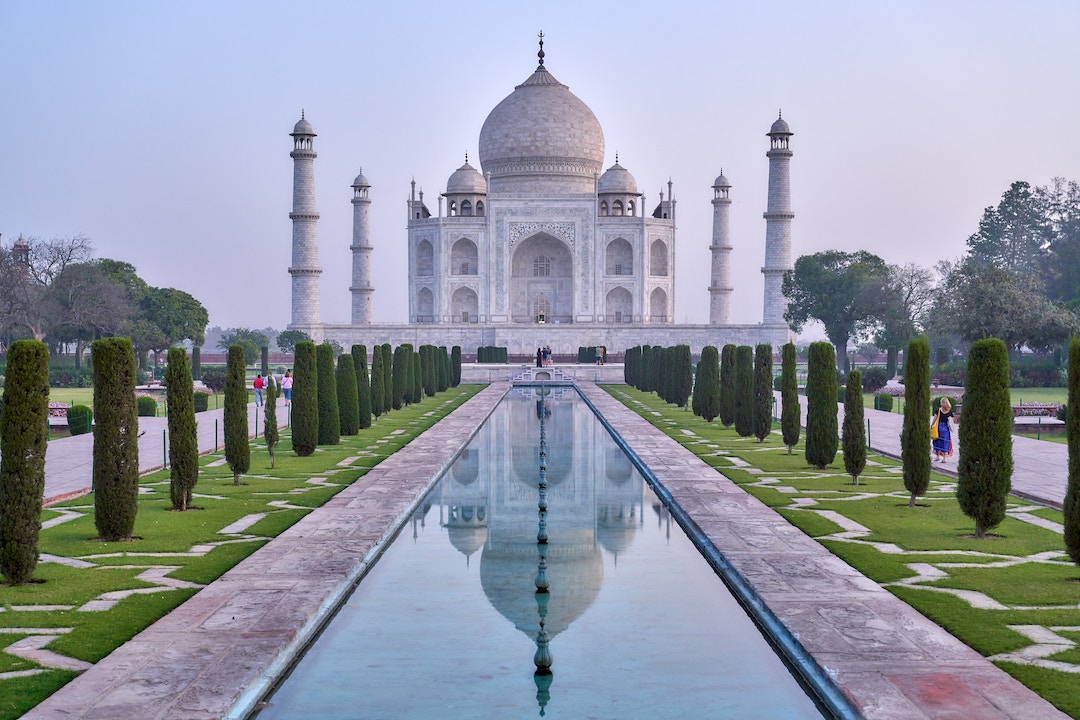Romance is said to be momentary, but love is progressive and dynamic—love is in it for the long haul. Finding that thermal capacity in a person, place or thing is not something that is found without effort, however.
To unchain that warmth, knowing it will only brighten for those who know what they are looking for, is immense. Although that sentiment can apply to a variety of things, it is especially true about architecture.
While romanticism in architecture generally refers to the 19th century European ‘revivalist’ and Eastern-influenced styles, it can also be reflective of the attitude a building exudes through its stance, through the sequence of its spaces—helping guide you to paths unseen from the peripheral, or its depth of connection to its environment.
A perfect example of this takes us to India to explore the archetype of romantic buildings, the Taj Mahal. Its underlying tone echoes, drifting from room to room and space to space while simultaneously encompassing the architectural craft and natural resources of its time.
Taj Mahal
The postcard picture of the Taj Mahal or “Crown Palace” alone doesn’t serve justice to its legend, but if made on the right heavy-weight card stock, in the right color with a simple message of love and affection, you’ll increase your chances for a memorable impact on those who receive it.
As one of the most well preserved and architecturally alluring tombs in the world, it is best described by the English poet Sir Edwin Arnold as, “Not a piece of architecture, as other buildings are, but the proud passions of an emperor’s love—wrought in living stones.”
Commissioned by Emperor Shah Jahan in 1631 as a tomb for his second wife, Mumtaz Mahal—who died giving birth to their 14th child—this marble domed tribute flanked by four tapering minarets lies on the south bank of the Yamuna river in the Indian city of Agra. The death of his queen devastated the Emperor, such that within a few months of her passing, all of his hair is said to have grown snow white.
Under the guidance of architect Ustad Ahmad Lahauri, with construction spread across 22-years, a group of 20,000 artisans and 1,000 elephants were able to amass this collection of “living stones.”
As a symbol of eternal love and a monument of enduring love, the Taj Mahal reveals its subtleties slowly. Its symmetrical footprint frames beautiful oblique views from every angle; its main gate can manifest itself into a veil—allowing one to see without being seen, and its decorative pishtaq arches hone the eye toward its calligraphy script, epitomizing the emperor’s love in written words.
With its marble façade acting as its backdrop, this mausoleum is even said to change colors throughout the day and during the seasons. Most notably, it flares pinkish tones in the morning and is milky white in the evening and at night. It gleams when the glow of the moon hits its inlaid stones. These changes, both tonal and harmonious, knit effortlessly with the building’s romanticism—impacting not only its environment but the well-being of those who spectate upon it.
When architecture can transcend its physical anatomy, like that of the Taj Mahal, it makes clear that the best designs are those that have a depth to its meaning. Creating an intangible connection with society and triggering an internal chemical synapse leading one to think, “I need to see this again.”





